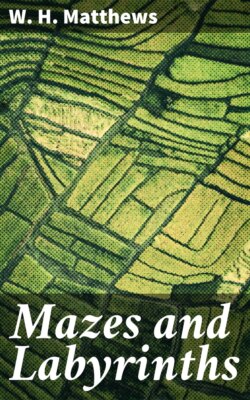Читать книгу Mazes and Labyrinths - W. H. Matthews - Страница 8
На сайте Литреса книга снята с продажи.
CHAPTER VI
THE CRETAN LABYRINTH (continued) (iii) Knossos
ОглавлениеTable of Contents
A few miles to the north-east of Gortyna, and not far south of the north coast town of Candia, lay, at the base of the hill of Kephala, a few ruined walls indicating the site of the ancient city of Knossos. These walls consisted of large blocks of gypsum and bore curious engraved marks.
For many years Dr. A. J. Evans (now Sir Arthur Evans) had been convinced that excavation of this site would probably bring to light evidence of a system of writing which might be of interest in connection with the origin of the Greek system, but it was not until the year 1900 that he finally obtained a concession enabling him to explore the spot. The resulting discoveries were of such an astonishing nature, and of such absorbing interest, that one is greatly tempted to digress and to mention them in some detail. However, they have been summarised and discussed by many able writers (see Appendix III, ii.), and it must suffice here to refer simply to the main points in which they bear upon the story of the Labyrinth.
After about two months' work, with a staff of from 80 to 150 men, about two acres of the remains of a great prehistoric building, showing strong evidence of having been destroyed by fire, were uncovered, and later excavations showed that it was yet more extensive, covering altogether about five acres. Not only this palace, but the multitude of objects found within it, or associated with it, were of surpassing importance in their bearing on the nature of the ancient civilisation of which they demonstrated the existence, and to which Sir A. Evans has given the name "Minoan." Vast quantities of pottery of widely different designs and workmanship, written tablets, wall paintings—often of great beauty—reliefs, and sculptured figures, shrines, seals, jewellery, a royal gaming-board, and even a throne, were discovered as the work went on, and eventually the whole area was excavated down to the virgin rock, remains of an earlier and smaller palace being found beneath the other, and below this again a great thickness of deposits containing many remains of neolithic man.
By means of occasional discoveries of imported Egyptian objects, by comparison of Minoan pottery and paintings with some found in Egyptian tombs, and by various other indications, it was possible to date the upper remains, say from 1580 B.C. onwards, fairly nearly. The dating of the older remains is much more difficult, chiefly because, although they can often be equated with certain periods of Egyptian culture, the chronology of the latter admits of widely different views, but it seems safe to say that the earliest traces of the Minoan civilisation date from quite 3000 years B.C., and possibly many centuries before that.
The earlier palace and town seem to have been built before 2000 B.C. and destroyed a few centuries after that date. The later palace was begun somewhere in the eighteenth or nineteenth century B.C., was elaborated in succeeding centuries, and was sacked and burned, just as it had attained the height of its glory, about 1400 B.C.
